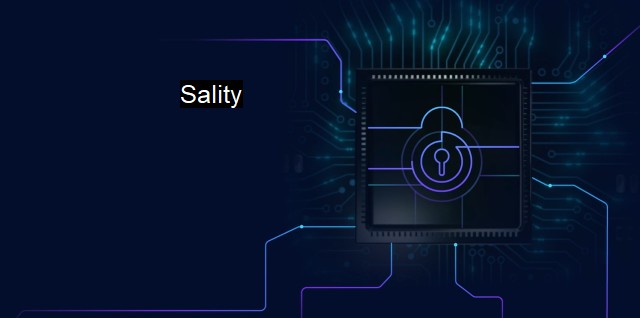What is Sality?
The Sality Virus: A Persistent and Stealthy Cyber Threat in the Modern Era of Technology
Sality is a family of file infecting viruses that are distributed through executable files. This wide-ranging and damaging type of malware first surfaced around 2003 and, since then, it has remained a consistent threat in the cybersecurity realm. Sality's primary purpose is to open doors into a compromised system, allowing remote access for potential illegal activities, which can include data theft, launching a distributed denial of service (DDoS) attack, and spreading other types of malware.Sality has a few characteristics that make it particularly alarming to cybersecurity experts and antivirus designers. The first of these involves its polymorphic abilities - it can alter its visible characteristics without changing its underlying functionality. This makes Sality remarkably resistant to detection, especially by conventional methods relying purely on signature-based detection techniques.
Secondly, it exhibits rootkit functionality to embed itself within the operating system, making its complete removal quite difficult. Sality goes to great lengths to protect itself from deletion or disinfection by disabling security-related processes and services, directly combating the efforts of antivirus software.
Sality creates a peer-to-peer (P2P) network of infected computers to share updates and plugins. By employing a decentralized network in this way, Sality becomes resilient to takedown attempts, creating a major challenge for cybersecurity operations. It can not only quickly distribute updates and additional components like keyloggers and rootkits to infected systems but also receive a continuous stream of commands from its creators, adding complexity to its execution process.
Sality is known to manipulate the host in several ways. It targets executable files with the extensions .scr or .exe for infection and also alters DNS settings to interfere with network activity. This DNS manipulation significantly limits the victim's access to security and antivirus websites, reducing the chance of Sality's detection and deletion.
Bringing a new sophistication level to malware, Sality has been successful in remaining a persistent threat in the cyber world. This is mainly because of its well-crafted kit of self-protection, self-recognition, self-modification, information gathering, and external communication techniques which collectively improve its performance and longevity.
Understanding the challenges brought by viruses like Sality is crucial for anyone in the cybersecurity industry, as this awareness helps introduce countermeasures more effectively. Detecting Sality is a complex battle due to its dynamic capabilities and stealthy nature. Antivirus software and threat detection systems have to continuously evolve with the threat, leveraging heuristic and behavior-based detection techniques supplemented by frequent updates and patches.
Removal of Sality and recovery from its after-effects often call for comprehensive cleanup operations. Systems may require restoration to their pre-infection state, or occasionally, complete reinstallation, as removing Sality without trace is a daunting task. Precisely, regular backups, continuous monitoring, keeping software and operating system patches up-to-date, and an effective antivirus solution are vital to resist and deal with such threatening malware types.
Considering its history, Sality is assumed to continue its course in changing forms with evolving malicious capabilities, setting a challenging path for the cybersecurity and antivirus community. Even though Sality has been active for nearly two decades now, its evolving nature means experts must remain proactive, investing in continued research and development in technologies aimed at detecting such threats more efficiently. Sighting its potential to inflict insidious damage, monitoring the methods and techniques employed by viruses like Sality remains crucial in the battle for cyber resilience.

Sality FAQs
What is Sality?
Sality is a type of computer virus that infects executable files on Microsoft Windows systems. It is known for its ability to mutate and evade detection by antivirus software.How does Sality infect a computer?
Sality typically spreads through removable devices like USB drives or through network shares. It can also be downloaded onto a system via malicious email attachments, social engineering schemes or drive-by downloads.What damage can Sality cause to a computer?
Sality can cause a variety of damage to an infected computer. It can steal sensitive information, spread to other systems on a network, corrupt files, and even disable antivirus software. It can also use an infected computer to carry out other malicious activities, such as launching DDoS attacks or sending spam emails.How can Sality be detected and removed?
Sality can be difficult to detect and remove due to its ability to mutate and hide from antivirus software. However, there are several anti-malware programs that are capable of detecting and removing Sality infections. It is also important to keep your antivirus software up-to-date and practice safe browsing habits to reduce the risk of infection.| | A | | | B | | | C | | | D | | | E | | | F | | | G | | | H | | | I | | | J | | | K | | | L | | | M | |
| | N | | | O | | | P | | | Q | | | R | | | S | | | T | | | U | | | V | | | W | | | X | | | Y | | | Z | |
| | 1 | | | 2 | | | 3 | | | 4 | | | 7 | | | 8 | | |||||||